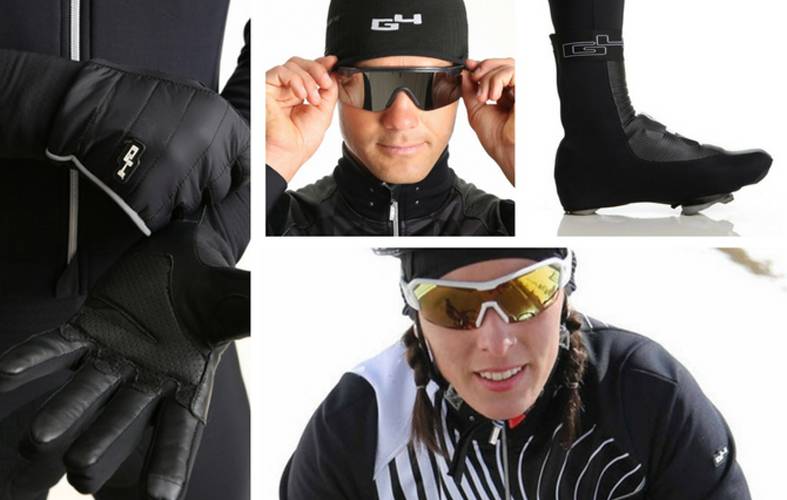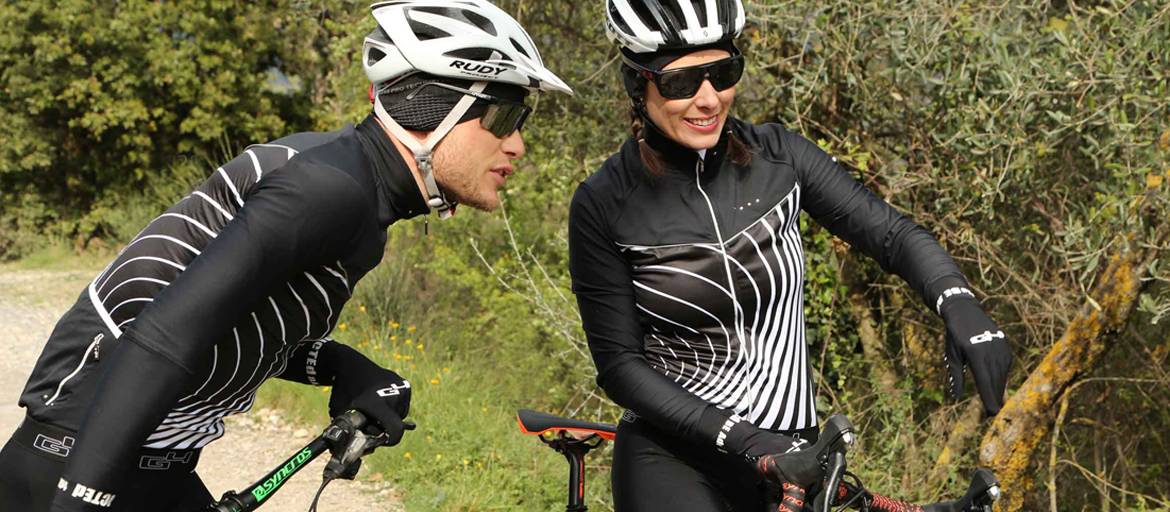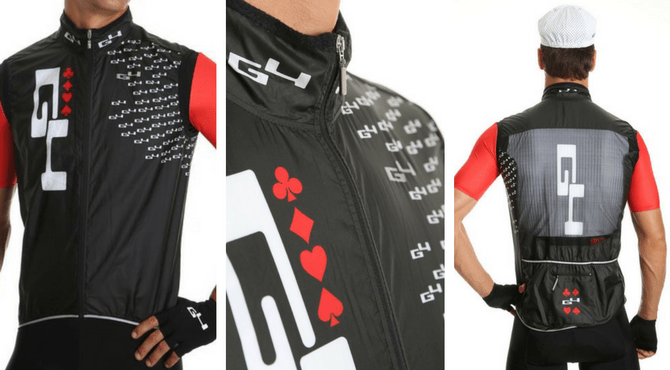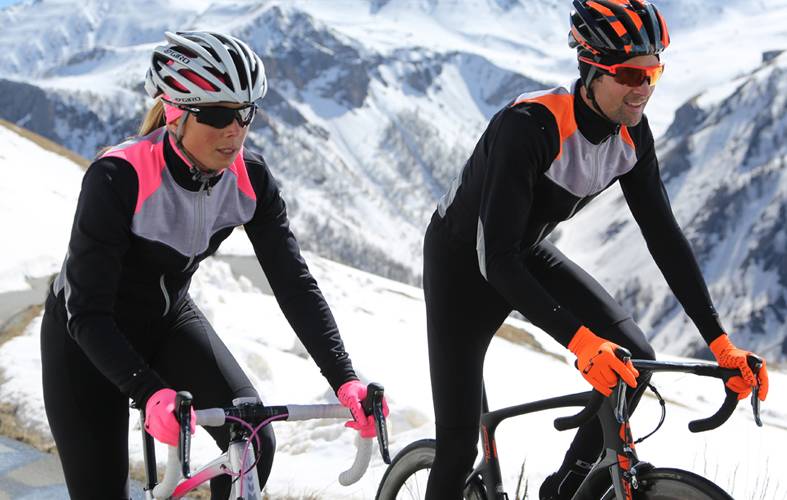Winter’s here, the days are shorter, the roads are slippery … This is the season less conducive to cycling … However, by adapting your training regime; it will always be possible to maintain your physical condition and ride during winter. Here are G4‘s tips for winter cycling.
1- Winter is good time for taking a break and practicing other sports
Winter is the ideal time to give yourself some respite. The break allows the body to regenerate itself but also to take a mental break, and thus, to regain motivation. Ideally, a total break of three to four weeks is advisable. Thereafter, during the first two months the training will be progressive in nature.
A great way to maintain a good physical condition is to vary the enjoyment by taking part in other sports such as mountain biking, exercises on the home-trainer, running, swimming and working out in the gym. These sports are complementary to cycling and will allow you to work other muscles. They have the advantage of taking less time and allow you to train even when it’s cold.
Former pro Geoffroy Lequatre advices: “Winter is the ideal time to think about something other than cycling – enjoy family meals and moments of relaxation. When I was still a professional rider, I took advantage of this period to swim, run or do yoga. It is a great way to recharge, regenerate body and mind, and especially to regain the desire to ride after an intense season.”

2- Carry on cycling even during the winter
Depending on where they live, not all cyclists experience the same climatic conditions, so it’s often possible to continue riding and practising your favourite sport even during the winter.
A- Adapt your bike outings
During winter, it’s advisable to shorten your rides (between 1 and 3h max). The cold demands much more of your energy.
B- Think about your diet and hydration
Even if you ride for less time, diet and hydration are fundamental. In the cold, the body burns an enormous amount of energy. So think about eating well on the bike especially since winter is not a time for competition or losing weight.
Don’t neglect your hydration! One of the most common mistakes is to drink less on the bike. However, you sweat even in winter and the water intake must remain consistent.
3- What to wear on winter rides
We do not all have the same tolerance for the cold. Some prefer riding in the heat while others cope well in wintery conditions. However, there are dress guidelines that apply to most people to help combat the cold.
Actually, you shouldn’t overdress because you’ll sweat on the ascents and catch a chill on the descents. Conversely, not wearing enough clothes can be very unpleasant or even dangerous. In general, we would advise against riding when temperatures are close to 0 degrees, for both health and safety reasons.
Finally, the choice of clothing and the technical features of the products are of crucial importance for your well-being.

A- Wear no more than three layers of clothing
Layering may not be the best way to protect yourself from the cold. The rule is generally to wear no more than three layers and preferably wear materials adapted for the specific conditions.
The three layers should typically consist of:
– A base layer next to the skin which wicks moisture, dries quickly, and provide a thermal insulation.
– A thermal jacket over your long-sleeved cycling jersey will protect you from the cold, cut the wind and keep out the rain while wicking away moisture.
– If you only have a mid-season jacket, you might opt to add a windbreaker, particularly on the descents

B- Protect your extremities on winter rides
If the choice of jacket and tights is of great importance, protection of your extremities is essential. Choosing the right gloves, headbands/hats and shoe covers is one of the conditions for successful winter cycle training. Your extremities are much more sensitive to variations in temperature. It is therefore advisable to choose your equipment wisely.
C- Adapt your clothing to the conditions
We will advise you what to wear depending on the range of temperatures:
Between 5 &; 10C °: At these temperatures, it’s necessary to be especially vigilant about the technical attributes of your cycling kit which will affect the success of your training.
– Thermal jacket: This is one of the most important garments. It protects you from the cold and the wind. A good thermal jacket will prevent you from compromising the layers underneath. A quality thermal jacket of quality and long-sleeved cycling shirt are sufficient even below 7C.
– Thermal tights: Offering greater protection from the cold than bib-shorts and leg warmers, thermal tights are essential to these temperatures. As with shorts, it is advisable to choose tights with a quality chamois adapted to your morphology to avoid chafing and discomfort.
– Shoe covers: Feet are very sensitive to the cold, below 7C, we advise you to wear waterproof thermal shoe covers.
– Winter gloves: Gloves must be waterproof and warm yet sufficiently thin and comfortable to allow you to brake with ease.
– Headband or hat: It’s important to protect your head and ears to avoid catching a chill. Choose sports headbands and hats that fit comfortably under your helmet and that wick away sweat.
From 10 to 15C °: These are ideal temperatures for riding and your kit should closely resemble that shown above, though for additional comfort:
– Gloves: Full-fingered thermal gloves aren’t necessary, choose lighter ones.
– Shoe covers: Choose lighter material shoe covers.
From 15 to 20C°: This is one of the most difficult temperatures to dress for. Thermal clothing is often too hot, but summer kit is too light. Choose mid-season clothing that is lighter but waterproof to avoid seasonal wind and showers.
– Long sleeve jersey or mid-season jacket: This is the ideal compromise for this temperature but don’t forget to take a wind-stopper vest for the descents.
– Light-weight gloves: use light-weight gloves that will easily slip into a pocket on the climbs.
– Shoe covers: generally not needed at this temperature but for those that feel the cold more, use light-weight shoe covers.

Above 20C °: as in the picture above, you can wear your short-sleeved shirts and shorts. Leg, knee and arm warmers are perfect and complimentary products at these temperatures. Again, choose high quality items that both stretch and fit like a second skin.
In summary, while winter is not the best time to ride, it’s possible to stay in good physical condition by cross-training, using another sport. You can still ride but you need to ensure that your kit can combat the colder conditions.
Find all G4 dimension’s winter ranges on our website www.g4dimension.com
Enjoy your rides
The G4 dimension team




No Comments
Leave a comment Cancel